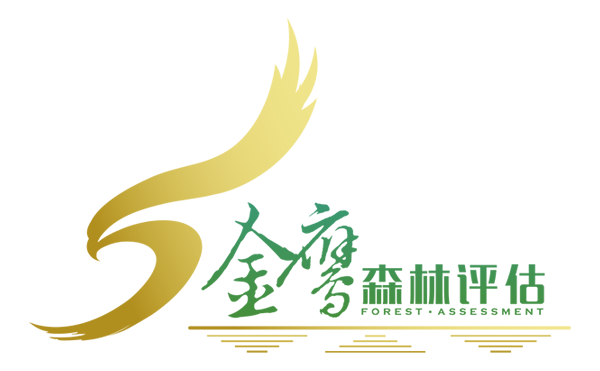發布:2025-11-14 瀏覽:0
全民所有森林資源資產清查,林地范圍為“年度國土變更調查”中的國有喬木林地、竹林地、灌木林地和其他林地;林木范圍為“年度國土變更調查”中地類為林地,且林草生態綜合監測評價數據中林木權屬為國有的林木。
The inventory of forest resources assets owned by the whole nation includes state-owned tree forest land, bamboo forest land, shrub forest land, and other forest land in the "Annual Land Change Survey"; The forest area is classified as forest land in the "Annual Land Change Survey", and the ownership of forest trees in the comprehensive monitoring and evaluation data of forest and grassland ecology is state-owned.
1實物量清查以最新“年度國土變更調查”林地圖斑為基礎,疊加林草生態綜合監測評價數據、森林資源規劃設計調查等森林資源專題成果,形成以縣級行政轄區為清查單位的全民所有森林資源資產數量、種類、質量等實物屬性信息。包括:行政區、空間位置、地類、面積、林地權屬、林木權屬、森林類別、林種(亞林種)、優勢樹種(組)、齡組(生產階段)、平均胸徑、平均樹高、株數、蓄積、林地等級等。
The physical inventory is based on the latest "Annual Land Change Survey" forest land map, combined with comprehensive monitoring and evaluation data of forest and grassland ecology, forest resource planning and design surveys, and other forest resource thematic results, to form physical attribute information such as the quantity, type, and quality of all forest resource assets owned by the public at the county level administrative jurisdiction as the inventory unit. Including: administrative region, spatial location, land type, area, forest land ownership, forest ownership, forest category, forest species (sub forest species), dominant tree species (group), age group (production stage), average breast height diameter, average tree height, number of trees, stock volume, forest land grade, etc.
2經濟價值核算價格內涵界定林地權利:林地使用權價格。林木權利:林木所有權價格。林地權利年期:70年?。林地類型:根據當地國有林地的主要類型,按照喬木林地、竹林地、灌木林地(一般灌木林地和灌木經濟林地)、其他林地設定。林木分類:根據森林類別劃分,按商品(用材林、經濟林、能源林),公益林(防護林、特種用途林)設定。基準日:2023年12月31日。
2. Economic value accounting price connotation definition of forest land rights: forest land use right price. Forest rights: The price of forest ownership. The tenure of forest land rights is 70 years ?. Forest land types are determined based on the main types of local state-owned forest land, including tree forest land, bamboo forest land, shrub forest land (general shrub forest land and shrub economic forest land), and other forest land. Classification of forest trees: Based on forest categories, they are classified into commodity forests (timber forests, economic forests, energy forests) and public welfare forests (protective forests, special-purpose forests). Base date: December 31, 2023.
價格體系建設技術流程均質區域平均價測算方法林地價格測算采用林地流轉價修正法、收益還原法和林地期望價法。?林地價格測算方法適用對象林地流轉價修正法可收集交易樣本數量充足的區域收益還原法林地地租可獲取林地期望價法林地地租不可獲取
The construction of a pricing system, technical process, homogeneous regional average price calculation method, and forest land price calculation method adopt the forest land transfer price correction method, income restoration method, and forest land expected price method. The method for calculating forest land prices is applicable to the forest land transfer price correction method, which can collect sufficient transaction samples, the regional income restoration method, the forest land rent that can be obtained, the forest land expected price method, and the forest land rent that cannot be obtained
林木價格測算主要方法包括:林木交易價修正法、市場價倒算法、收獲現值法、重置成本法
The main methods for calculating forest prices include: forest transaction price correction method, market price inversion algorithm, present value of harvest method, and reset cost method
林木價格測算方法適用對象林木交易價修正法可收集交易樣本數量充足的區域市場價倒算法用材林(成熟林、過熟林)收獲現值法用材林(中齡林、近熟林、幼齡林(年齡>10年))、經濟林(初產期、盛產期、衰產期)、竹林、能源林重置成本法經濟林(產前期)、用材林(幼齡林(年齡≤10年))
The method for calculating forest prices is applicable to forest transaction price correction method, which can collect sufficient transaction samples in the regional market price inversion algorithm. For timber forests (mature forests, over mature forests), the present value of harvest method is used for timber forests (middle-aged forests, near mature forests, young forests (age>10 years)), economic forests (initial production period, abundant production period, declining production period), bamboo forests, energy forests. The reset cost method is used for economic forests (pre production period), and timber forests (young forests (age ≤ 10 years))
制定省級價格修正體系為提高清查精度,將均質區域林地平均價修正到縣(市、區)林地平均價,將均質區域優勢樹種林木平均價擴展到均質區域內主要樹種林木平均價,設置如下修正辦法:
To improve the accuracy of inventory, a provincial-level price correction system has been established to adjust the average price of forest land in homogeneous areas to the average price of forest land in counties (cities, districts), and to extend the average price of dominant tree species in homogeneous areas to the average price of main tree species in homogeneous areas. The following correction methods are set:
1、設置省級林地價格調整系數
1. Set provincial forest land price adjustment coefficient
林地主要調整因素為木材平均價格調整系數(Ws)、成熟林單位面積蓄積量調整系數(Ms)和成熟林平均樹高調整系數(Hs),主要樹種木材平均價格能體現區域林木經濟市場水平,林地的生產力水平;成熟林單位面積蓄積量能體現林木的產量水平;成熟林平均樹高能體現林木收獲時的林地生產力水平。因此根據以上因素確定省級林地價格調整系數(Es)。
The main adjustment factors for forest land are the average price adjustment coefficient (Ws) for timber, the unit area volume adjustment coefficient (Ms) for mature forests, and the average tree height adjustment coefficient (Hs) for mature forests. The average price of timber for major tree species can reflect the regional forest economic market level and the productivity level of forest land; The unit area accumulation of mature forests can reflect the yield level of trees; The average tree energy of mature forests reflects the level of forest productivity at harvest time. Therefore, the provincial forest land price adjustment coefficient (Es) is determined based on the above factors.
2、設置省級林木調整系數
2. Set provincial forest adjustment coefficient
設置省級林木調整系數的目的是通過已有價格的某種優勢樹種擴展求算未知的某一種目標樹種的價格,各類林木具體的調整系數計算如下:
The purpose of setting the provincial forest adjustment coefficient is to expand the existing price of a certain advantageous tree species and calculate the price of an unknown target tree species. The specific adjustment coefficients for each type of forest are calculated as follows:
(1)用材林林木幼齡林林木目標樹種調整系數測算
(1) Calculation of adjustment coefficient for target tree species in timber forests, young forests, and target trees
幼齡林林木調整因素為主要樹種的造林成本、平均樹高和單位面積株數。因此省級幼齡林林木目標樹種調整系數(Ls)由目標樹種造林成本調整系數(Cs)、平均樹高調整系數(Hs)、 單位面積株數調整系數(Ns)綜合確定。?中齡林以上林木目標樹種調整系數為目標樹種木材平均價格調整系數(Ws)、單位面積蓄積量(Ms)和平均胸徑調整系數(Ds),木材平均價格越高,收益越高,體現了林木產值也越高,單位面積蓄積量越高林木質量越好,平均胸徑越大林木質量越好。因此確定以上三個調整系數作為省級林木調整系數(Fs)。?(2)經濟林林木產前期經濟林林木,主要調整因素為主要經濟樹種的造林成本、單位面積株數和平均樹高,因此省級產前期經濟林林木調整系數(JS)由目標樹種造林成本調整系數(CS)、平均樹高(冠幅)調整系數(HS)、單位面積株數調整系數(NS)綜合確定。
The adjustment factors for young forest trees are the afforestation cost, average tree height, and number of trees per unit area of the main tree species. Therefore, the target tree species adjustment coefficient (Ls) for young forest trees at the provincial level is determined by a combination of the target tree species afforestation cost adjustment coefficient (Cs), average tree height adjustment coefficient (Hs), and unit area plant number adjustment coefficient (Ns). The adjustment coefficients for target tree species of medium aged forests and above are the average price adjustment coefficient (Ws), unit area volume (Ms), and average diameter at breast height adjustment coefficient (Ds) of the target tree species. The higher the average price of wood, the higher the income, reflecting the higher output value of the forest. The higher the unit area volume, the better the quality of the forest, and the larger the average diameter at breast height, the better the quality of the forest. Therefore, the above three adjustment coefficients are determined as the provincial forest adjustment coefficients (Fs). (2) The main adjustment factors for economic forest trees in the early stage of production are the afforestation cost, number of trees per unit area, and average tree height of the main economic tree species. Therefore, the provincial adjustment coefficient (JS) for economic forest trees in the early stage of production is determined by the target tree species afforestation cost adjustment coefficient (CS), average tree height (crown width) adjustment coefficient (HS), and number of trees per unit area adjustment coefficient (NS).
初產期以上經濟林林木,林木主要調整因素為目標樹種經濟林產品平均價格和單位面積產量,因此初產期以上省級經濟林林木調整系數(KS)由目標樹種經濟林產品平均價格調整系數(WS)、單位面積產量調整系數(VS)綜合確定。?(3)竹林林木竹林林木主要調整因素為竹子平均價格和單位面積株數。竹子平均價格越高,竹林收益越高,體現了竹林產值也越高;單位面積株數越多,可采伐株數越多,產量越高。因此省級竹林林木調整系數(QS)由主要竹子平均價格調整系數(QS1)、單位面積株數調整系數(QS2)綜合確定。?(4)能源林能源林主要調整因素為能源林產品平均價格和單位面積產量,因此省級能源林調整系數(RS)由主要能源林產品平均價格調整系數(RS1)、單位面積產量調整系數(RS2)綜合確定。
The main adjustment factors for economic forest trees above the initial production period are the average price of economic forest products of the target tree species and the yield per unit area. Therefore, the adjustment coefficient (KS) for provincial economic forest trees above the initial production period is determined by the average price adjustment coefficient (WS) of economic forest products of the target tree species and the yield adjustment coefficient (VS) per unit area. (3) The main adjustment factors for bamboo forests are the average price of bamboo and the number of trees per unit area. The higher the average price of bamboo, the higher the income of bamboo forest, which reflects the higher output value of bamboo forest; The more plants per unit area, the more trees can be harvested, and the higher the yield. Therefore, the provincial-level bamboo forest adjustment coefficient (QS) is determined by a combination of the average price adjustment coefficient (QS1) for major bamboo and the number of plants per unit area adjustment coefficient (QS2). (4) The main adjustment factors for energy forests are the average price of energy forest products and the yield per unit area. Therefore, the provincial energy forest adjustment coefficient (RS) is determined by a combination of the average price adjustment coefficient (RS1) for main energy forest products and the yield adjustment coefficient per unit area (RS2).
縣級經濟價值核算在省級價格體系控制下,各縣根據具體情況,可選擇以下三種方式之一進行縣級清查經濟價值核算:
Under the control of the provincial price system, county-level economic value accounting can be conducted through one of the following three methods based on specific circumstances:
方法一:已完成縣級單位子圖斑價格測算的地區,可根據實物量清查數據,及樹種歸并原則將圖斑內除主要樹種外的其他樹種,調整歸并至主要樹種,利用圖斑林地、林木價乘以對應圖斑面積,加總得到縣域森林資源資產價值量,逐級匯總得到省級和全國森林資源資產的經濟價值總量。
Method 1: In areas where county-level unit sub patch prices have been calculated, other tree species within the patch can be adjusted and merged into the main tree species based on physical inventory data and the principle of tree species merging. By multiplying the patch forest land and tree prices by the corresponding patch area, the total value of county-level forest resource assets can be obtained, and the economic value of provincial-level and national forest resource assets can be summarized step by step.
縣域林地經濟價值=∑各圖斑林地平均價×縣域清查范圍圖斑面積
Economic value of county-level forest land=∑ Average price of forest land in each area × Area of forest land surveyed in the county
縣域林木經濟價值=∑各圖斑林木平均價×縣域清查范圍圖斑面積
The economic value of forest trees in the county=∑ average price of forest trees in each patch × area of patch in the county inventory range
縣級森林資源資產經濟價值=縣域林地經濟價值+縣域林木經濟價值
Economic value of county-level forest resource assets=Economic value of county-level forest land+Economic value of county-level forest trees
方法二:已完成省級價格體系建設,未開展完成縣級圖斑價格測算的地區,可根據實物量清查數據,將縣內除主要樹種外的其他樹種,調整歸并至主要樹種,利用縣林地、林木平均價乘以對應面積,加總得到縣域森林資源資產價值量,逐級匯總得到省級和全國森林資源資產的經濟價值總量。
Method 2: For areas that have completed the construction of the provincial price system but have not yet carried out county-level spot price calculation, other tree species in the county can be adjusted and merged into the main tree species based on physical inventory data. The average price of forest land and trees in the county can be multiplied by the corresponding area to obtain the value of forest resource assets in the county. The total economic value of forest resource assets at the provincial and national levels can be summarized step by step.
縣域林地經濟價值=縣域林地平均價×縣域清查范圍面積
Economic value of county-level forest land=average price of county-level forest land x area of county-level inventory scope
縣域林木經濟價值=縣域林木平均價×縣域清查范圍面積
Economic value of county-level forests=average price of county-level forests x area of county-level inventory scope
縣級森林資源資產經濟價值=縣域林地經濟價值+縣域林木經濟價值
Economic value of county-level forest resource assets=Economic value of county-level forest land+Economic value of county-level forest trees
方法三:未完成省級價格系統建設的地區,可根據實物量清查數據,將縣域范圍內除均質區域優勢樹種外的其他樹種,調整歸并至優勢樹種,利用均質區域林地、林木平均價乘以對應面積,加總得到縣域森林資源資產價值量,逐級匯總得到省級和全國森林資源資產的經濟價值總量。縣域林地經濟價值=均質區域林地平均價×縣域清查范圍面積
Method 3: In areas where the provincial price system construction has not been completed, other tree species within the county area can be adjusted and merged into dominant tree species based on physical inventory data, except for dominant tree species in homogeneous areas. The average price of forest land and timber in homogeneous areas can be multiplied by the corresponding area to sum up the value of forest resource assets in the county area. The total economic value of forest resource assets at the provincial and national levels can be summarized step by step. Economic value of county-level forest land=average price of homogeneous regional forest land x area of county-level inventory scope
縣域林木經濟價值=均質區域林木平均價×縣域清查范圍面積
The economic value of county-level forest trees=average price of homogeneous regional forest trees x area of county-level inventory scope
縣級森林資源資產經濟價值=縣域林地經濟價值+縣域林木經濟價值
Economic value of county-level forest resource assets=Economic value of county-level forest land+Economic value of county-level forest trees
本文由 森林資源資產評估 友情奉獻.更多有關的知識請點擊 http://m.kkpcgoldfoam.com/ 真誠的態度.為您提供為全面的服務.更多有關的知識我們將會陸續向大家奉獻.敬請期待.
This article is contributed by the Friendship Contribution of Forest Resource Asset Evaluation For more related knowledge, please click http://m.kkpcgoldfoam.com/ Sincere attitude To provide you with comprehensive services We will gradually contribute more relevant knowledge to everyone Coming soon.

















